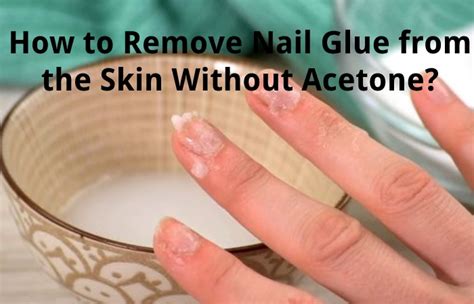How to Take Nail Glue Off: A Comprehensive Guide
Nail glue can be a lifesaver for quick fixes and DIY nail art, but removing it without damaging your natural nails requires the right technique. This comprehensive guide will walk you through several effective methods for removing nail glue, ensuring your nails remain healthy and strong.
Understanding Nail Glue Removal
Before we dive into the methods, it's crucial to understand why removing nail glue correctly is important. Aggressive removal can lead to:
- Nail damage: Pulling or scraping can weaken your nails, leading to peeling, splitting, and breakage.
- Infections: Improper removal can create tiny cracks, allowing bacteria and fungus to enter.
- Cuticle damage: Harsh chemicals or tools can irritate the delicate skin surrounding your nails.
Therefore, patience and the right approach are key.
Safe and Effective Methods for Nail Glue Removal
Here are several methods you can try, ranging from gentle soaking to more robust techniques:
1. Soaking with Acetone
Acetone is the most common and effective solvent for nail glue. It gently dissolves the glue, making removal much easier.
- What you'll need: Acetone (pure acetone is best), cotton balls, aluminum foil, a small bowl (optional).
- How to do it:
- Soak a cotton ball in acetone.
- Place the soaked cotton ball on the glued area.
- Cover the cotton ball with a small piece of aluminum foil to keep it moist.
- Let it sit for 10-15 minutes. You may need longer depending on the type and amount of glue.
- Gently push or peel off the glued item. The glue should now be softened and easier to remove.
- If necessary, repeat the process. Avoid aggressive scrubbing.
- Once the glue is removed, wash your hands and moisturize your nails and cuticles.
Caution: Acetone can be drying, so moisturizing afterward is crucial. Avoid prolonged skin contact.
2. Soaking with Non-Acetone Nail Polish Remover
If you prefer a gentler approach, non-acetone nail polish remover can work, although it may take longer. The process is the same as with acetone, but you may need to soak for a longer period.
3. Using Nail Glue Remover
Specialized nail glue removers are available in beauty supply stores. These are formulated to dissolve nail glue effectively and often include moisturizing ingredients to minimize dryness. Follow the instructions on the product packaging.
4. Gentle Filing (Use with Caution!)
For stubborn glue residue, you can carefully use a fine-grit nail file to gently buff away the remaining glue. Be extremely cautious to avoid damaging your natural nail. Use light pressure and short strokes.
Preventing Future Nail Glue Issues
- Apply thin layers: Applying too much glue at once makes removal more difficult.
- Use the right glue: Choose a high-quality glue designed for nails.
- Don't over-glue: Apply only the amount needed to secure the item.
Conclusion
Removing nail glue effectively requires patience and the right technique. By following these methods, you can remove nail glue safely and minimize the risk of damaging your nails. Remember to always moisturize your nails and cuticles after removing any glue. If you experience any significant nail damage or irritation, consult a dermatologist or nail technician.
